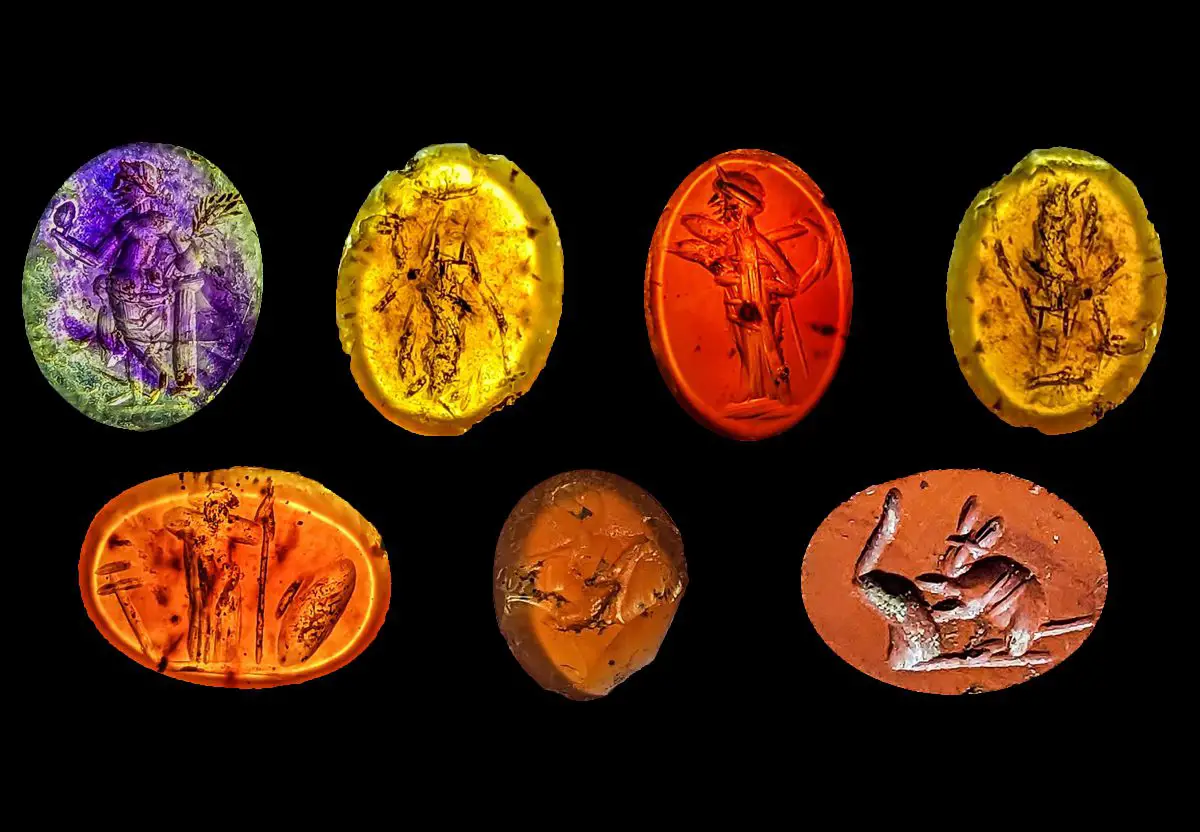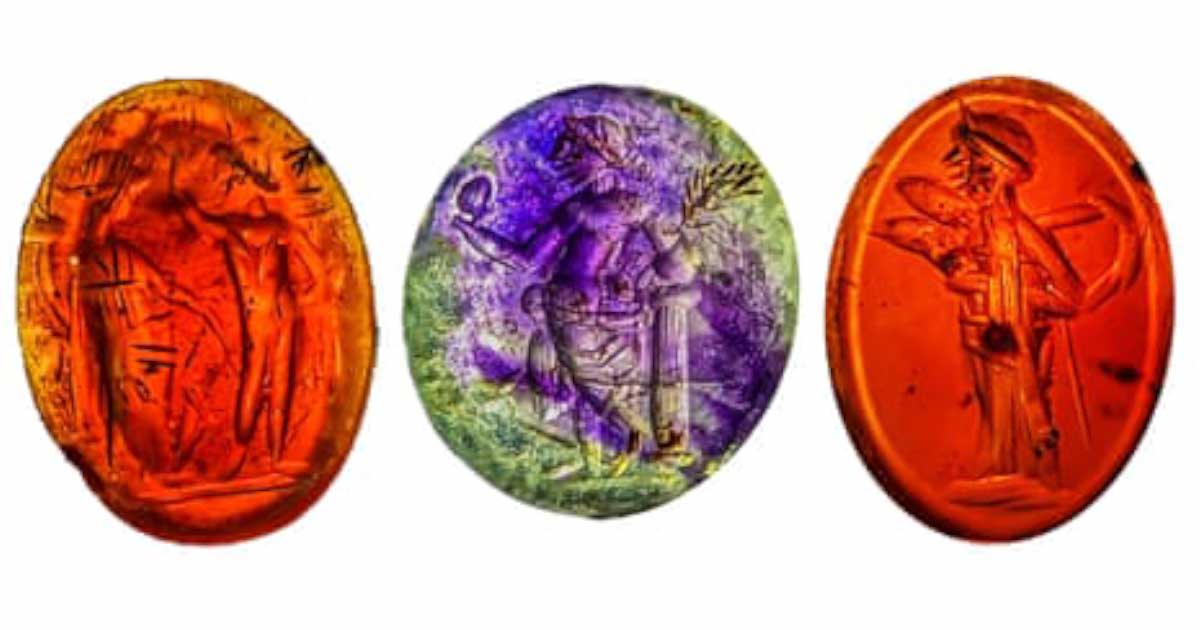Archaeologists excavating in Carlisle, England, have uncovered 2,000-year-old engraved gems near Hadrian’s Wall.
The Uncovering Roman Carlisle project has been conducting a community supported excavation at the Carlisle Cricket Club, where the team have been excavating a Roman bath house after its initial discovery in 2017 by archaeologists from Wardell Armstrong.
The bath house is located near the Roman fort of Uxelodunum (meaning “high fort”), also known as Petriana, in the Carlisle district of Stanwix. Uxelodunum was constructed to control the territories west of present-day Carlisle and the vital crossing at the River Eden.

It was located behind the Hadrianic barrier, with the Wall forming its northern defences and its long axis parallel to the Wall. The fort was garrisoned by the Ala Petriana, a 1,000-strong cavalry unit, whose members were all granted Roman citizenship for valour on the field.
Previous excavations of the bath house have revealed several rooms, a hypocaust system, terracotta water pipes, intact floors, painted tiles and fragments of cooking pots. The bath house was used by the soldiers for recreation and bathing, where several high-ranked soldiers or Roman elite lost the engraved gems while bathing in its heated waters, which were then flushed into the drains when the pools were cleaned.
The engraved gems known as intaglios date from the late 2nd century or 3rd century AD, which includes an amethyst depicting Venus holding a flower or a mirror, and a red-brown jasper featuring a satyr.
Speaking to the Guardian, Frank Giecco from Wardell Armstrong said: “You don’t find such gems on low-status Roman sites. So, they’re not something that would have been worn by the poor. Some of the intaglios are minuscule, around 5mm ; 16mm is the largest intaglio. The craftsmanship to engrave such tiny things is incredible.”

Excavations also found more than 40 women’s hairpins, 35 glass beads, a clay Venus figure, animal bones, and imperial-stamped tiles – suggesting that the bathhouse was a monumental construction used by not just the garrison of Uxelodunum, but Roman elite living near near the fort and the fort of Luguvalium, located a short distance away now beneath Carlisle Castle.
Src: heritagedaily.com








